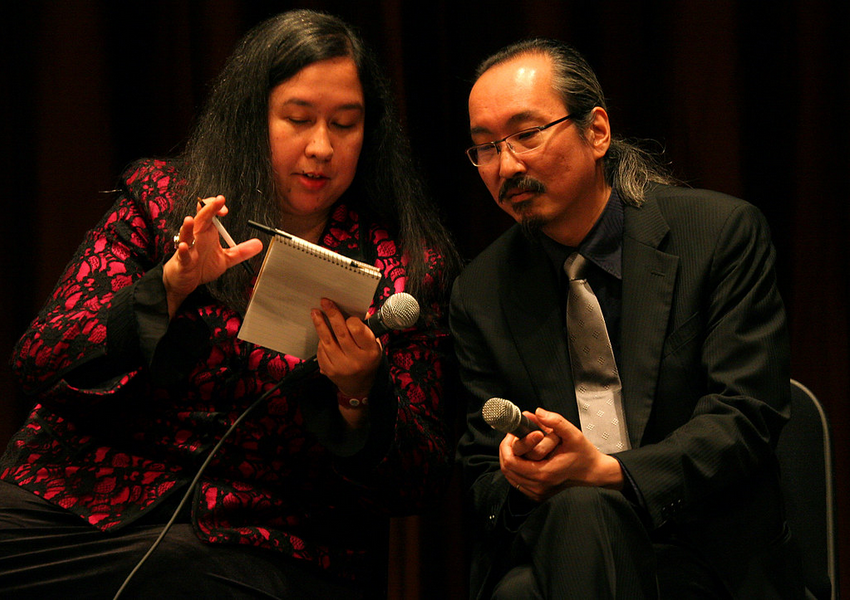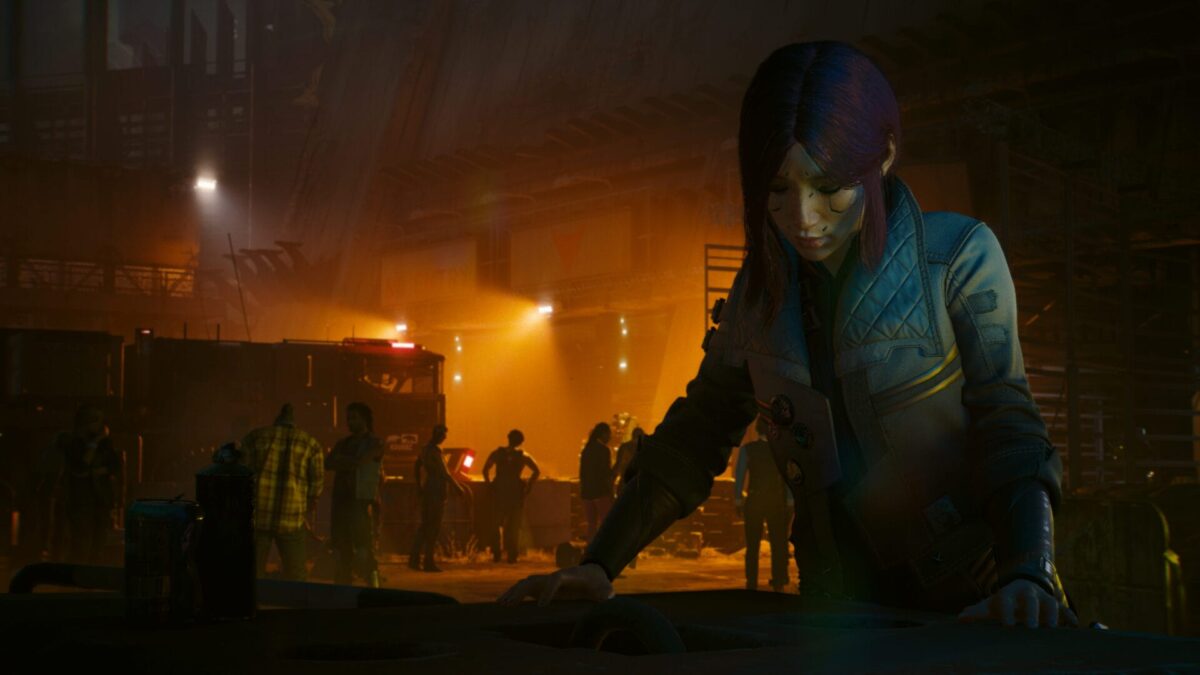
Paranoia Agent Anime Review | The surreal universe of Satoshi Kon
Creator
Director
Year
Country
Original language
Subgenre
Music by
Paranoia Agent is Satoshi Kon‘s fourth work and his debut animated show. It comprises 13 episodes that originally aired in Japan from February 2 to May 17, 2004, on WOWOW satellite TV. For this project, the director collaborated again with Madhouse Studio, following the partnership born from his first feature movie, Perfect Blue.
Paranoia Agent is an anime production that delves into adult themes, such as critiques of Japanese
society, burnout, stress, and the emotional detachment brought by postmodernity.
The plot in a nutshell
In December 2000, a 17-year-old boy from Tokyo argued with his father before going on to assault eight people in Shibuya, inspiring Satoshi Kon to release his sole TV show. Tracing the path of the news story, the film maker offers his personal interpretation, transforming the ordinary into the extraordinary.
At the beginning the designer Tsukiko Sagi suffers from the envy of her pairs caused by the success she gained after she invented the mascot, Moromi. The puppet is an obvious reference to the Japanese fictional character Hello Kitty, the face of the entertainment company Sanrio, known for the kawaii, “cute”, segment of Asian pop culture.
The hindering fear of failure holds her back from pushing ahead with new creations. Tsukiko feels the squashing weight of expectations on her shoulders. The protagonist has a personality disorder that brings her to speak with anyone, but the rag doll.
The young lady cannot distinguish fantasy from reality and, while she runs back home from work, trying to escape from an imaginary enemy, she stumbles upon a little boy on inline skates, who assaults her with a golden bat. During the interrogation, detectives Keiichi Ikari and Mitsuhiro Maniwa doubt the victim’s version. Nevertheless, the police hold the attacker – the so-called Shounen Bat or Lil’ Slugger – responsible for many other incidents of violence in Tokyo.
The TV show is about a crime with yellow hues, combining fantasy and tragedy in order to weave suspense into a whodunit in a very unique way. Also, the two detectives become victims of the monster conceived by Tsukiko, originating from victims’ collective paranoia that alleviates their existential discomfort with a strike to the head and neck.
On a deeper level, the stuffed animal represented Tsukiko’s psychological struggles, as she crafted it as a coping mechanism for her loneliness and isolation. When the emotional strain became overwhelming, Maromi emerged, giving voice to the subconscious feelings of the young lady herself.

Satoshi Kon’s entire oeuvre revolves around the concept of escape, all his characters fleeing from the pain, suffering, and social follies of their time. In this globalized society, where the mass often swallows the individual, what can safeguard one’s integrity and sanity?
In the final episode the chaos generated recalls Akira and Roujin Z, feature movies directed by Katsuhiro Otomo. Even after Shounen Bat‘s real identity is revealed, the deeper meaning of the story remains obscured within the rumours of the city, which fuel the urban legend surrounding the aggressor, flooding the metropolis by a way of a gargantuan blob.
The inspiration
The infamous Lil’ Slugger threatens the residents of Musashino City. Speeding on rollerblades and attacking people with a golden baseball bat, his identity remains a mystery.
The dummy resembles Chucky, the red-headed, overalls-clad, and foul-mouthed doll from the 1988 movie Child’s Play. This feature effectively set the stage for the genre of horror movies involving killer toys that emerged in its wake. Maromi shoulders the weight of human suffering. Kon creates a suspended, almost fleeting dimension, further disrupted by the arrival of Shounen Bat.
The two investigators from Paranoia Agent probe into a case involving the audience. This gimmick is reminiscent of American mystery-horror drama television show, notably Twin Peaks. It is a hypnotic masterpiece dense with mystique, visually hypnotic, and narratively impenetrable.
David Lynch aims to leave the viewers in a state of uncertainty, where the line between reality and illusion is that weak to disappear. For instance, at the end of the third season, Coop baffled and confused, eventually asks, “What year is this?” And that’s how it enters in an open ending.

Paranoia Agent feels like a spiritual successor to Perfect Blue in many respects, delving into themes of social phenomena, mob mentality, and fractured psyches.
Likely to Millenium Actress – where former actress Chiyoko Fujiwara tells her life, framed within Japanese cinematic history –, through the interrogation of the suspects Satoshi Kon presents a narrative where modern-day characters are thrust into imaginary worlds, gradually aligning with the story of the individual responsible for creating such universe. A seasoned author who effortlessly navigates the space between reality and the dreamlike, influencing filmmakers like Christopher Nolan and Darren Aronofsky to re-shape the very notion of vision.
By doing so, Kon unleashes an original anime show, interwoven within a web of overlapping dimensions, ranging from dream, memory, to psychology. The director offers a relentless critique of Japanese society, he portrays a society obsessed with appearances, isolated, and corrupted.
Imagination and reality blend together to create a playful interaction with the audience, inviting the spectators to immerse themselves in a familiar Kon’s artistic approach. Anticipating Paprika – the main inspiration for Christopher Nolan‘s feature movie Inception – the director once again crafts a space where anything can happen.
Kon’s only TV show
Furthermore, in the opening of the anime the characters are depicted as lively cardboard. In this way, the intro enhances the unearthly setting of the opus yet is amplified by Susumu Hirasawa‘s sound.
His atonal harmonies, repeated relentlessly, accentuate the psychotropic of the visuals, whether standing on the ledge of a slick building in a downpour, in the middle of a street with a traffic light, amidst garbage and debris, underwater or through a rushing flood, or falling from the sky.
The opening is a roundup of post-apocalyptic scenarios reminiscent of World War II, featuring the atomic mushroom cloud from the bombings of Hiroshima and Nagasaki in 1945. Human history continually marks the everlasting return as people construct reality upon fiction.
The audience for television differs from the cinema-going crowd; for this very reason, the author chose to adapt this story for TV. He gave his point of view right after winning an award at the Japan Media Arts Festival:
I wanted to do something that allows me to be more flexible, to realize instantly what flashes across my mind. I was also aiming at a sort of entertaining variation, so I decided to go for a TV show.
The decision to broadcast it on the small screen, on the other hand, was intended to speak with the audience, who delves into the past of every character involved in the show. Given that a TV show is much longer than a movie, every episode gives a different perspective to view the intrigue. The advantage is that it allows for a better understanding of the meaning the author wants to convey to his public.
Although Paranoia Agent is considered one of Satoshi Kon’s weaker works when compared to his movies like Millennium Actress or Paprika, which boast exceptionally high standards in both imagery and animation, it still holds its own in terms of creativity and thematic depth. Even so, the Kon’s sole TV show remains one of the standouts shows of the early 2000s.
The sorrow of mental disorders in Japan
According to the Newspaper Depictions of Mental Health Disorders in Japan: An Opportunity for Enquiry-Based Learning, Nippon has the highest per capita rate of psychiatric hospitalizations in the globe. As we read the Japan Health Policy NOW (JHPN):
In 2017, experts estimated that 4.193 million people in Japan were living with mental health issues, and they expect the number to continue increasing. Stigma toward patients suffering from mental disease worldwide, as the scientific essay Public perceptions of mental illness in Japan shows, can significantly discourage those with mental illness from seeking appropriate help.
As a matter of fact, when Kon made Paranoia Agent Japanese citizens used to struggle with issues like depression, anxiety, schizophrenia, psychopathy, and social isolation. The show prompted the audience to reexamine their beliefs about mental health, fostering greater empathy and understanding for those who grapple with paranoia.
Tag
Buy a ☕ for Hypercritic












